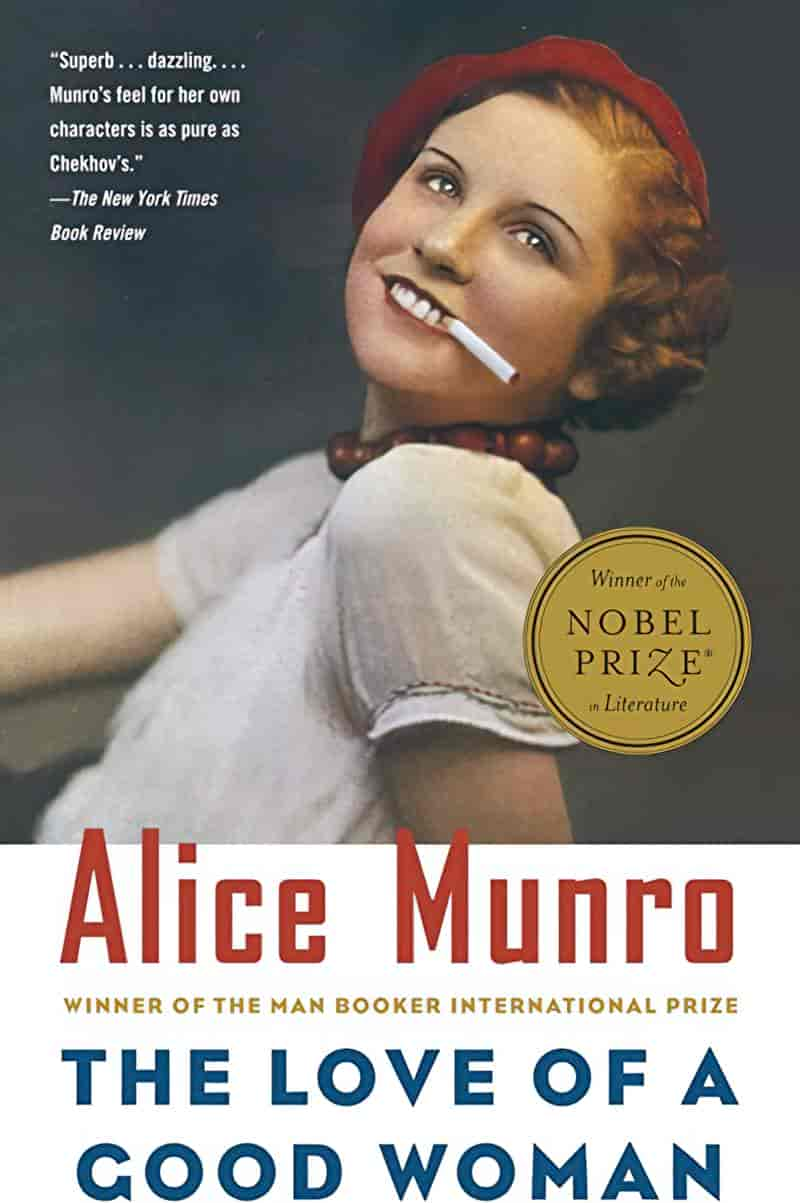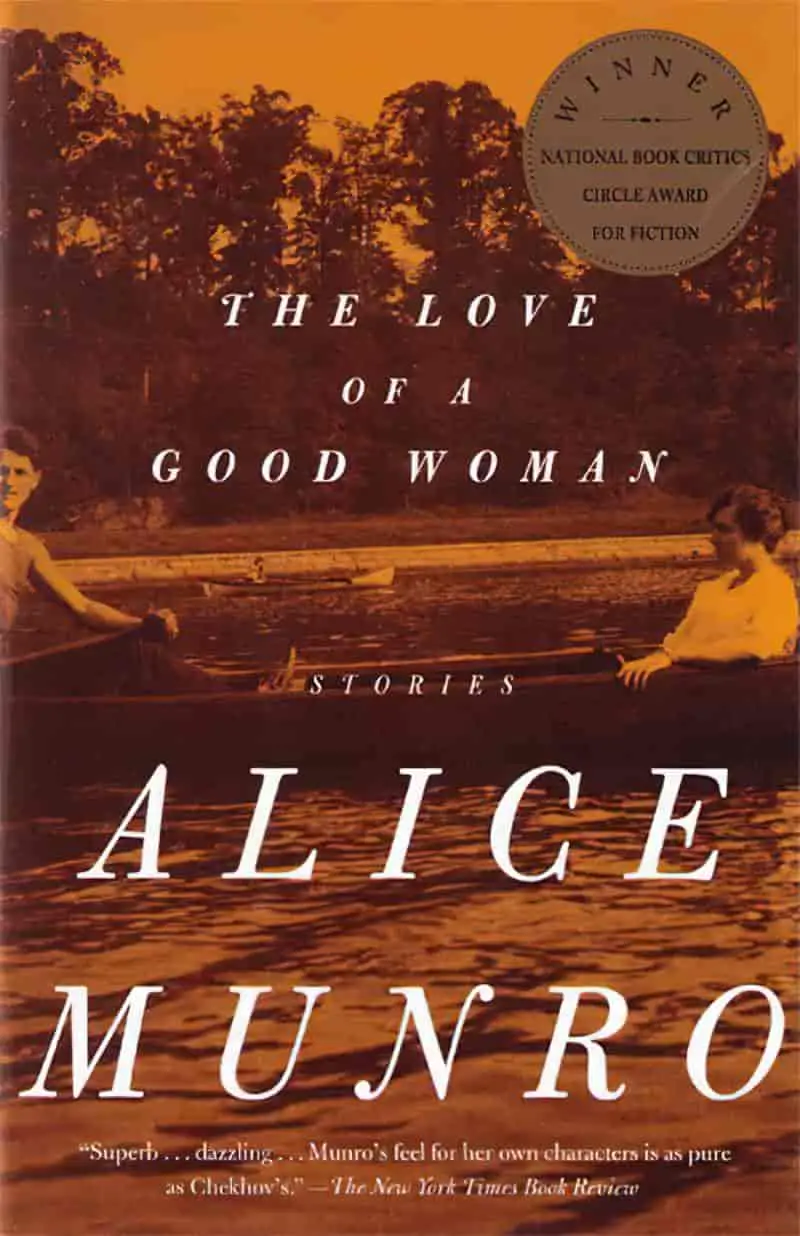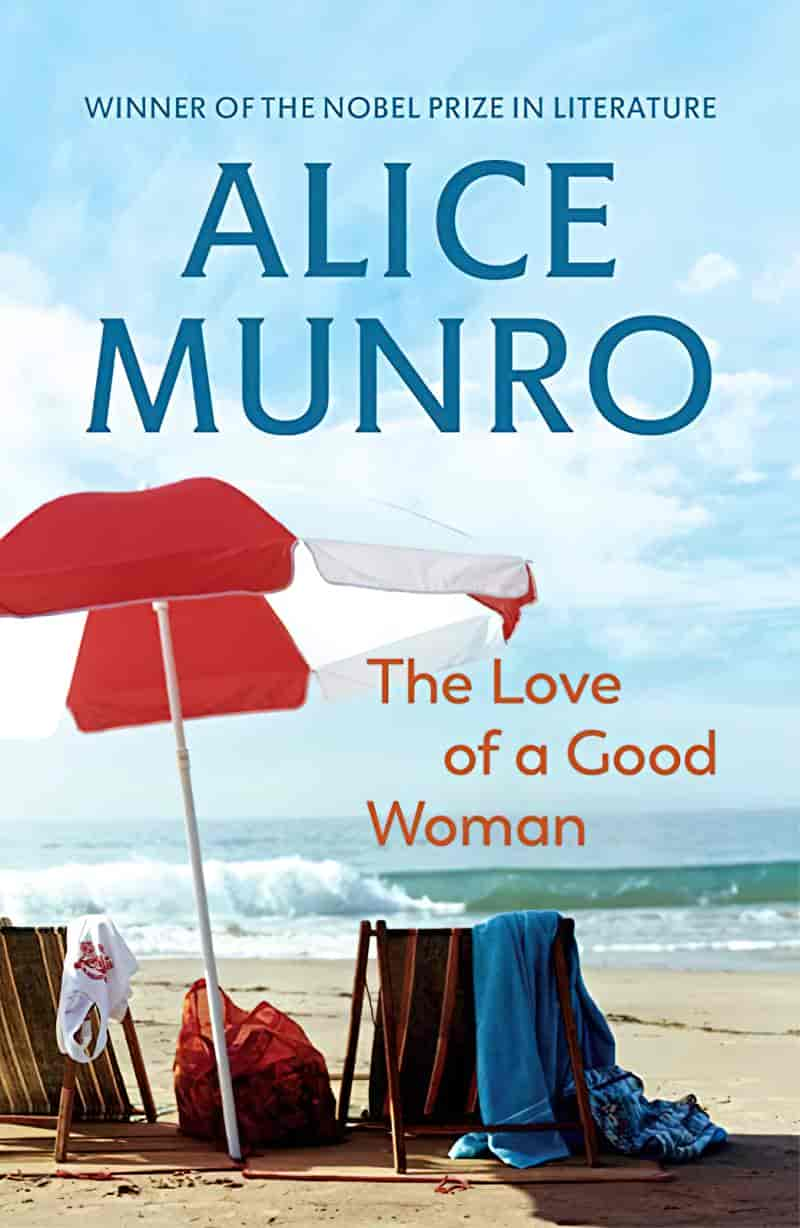“Cortes Island” is a short story by Alice Munro, included in the 2013 collection The Love Of A Good Woman, which won the Nobel Prize in Literature. Like another story in this collection, “Jakarta“, the title of this story is set in a place away from where the action takes place. Writers often say that the characters who exist off the page are as important as the character who exist on the page (engaged in the action). The same is true of places, especially for a writer like Alice Munro. This is yet another way in which a setting can be considered a character.
In this case, Cortes Island is the place where the first person narrator’s landlady used to live as a young woman. The real Cortes Island lies off the coast of British Columbia. In 2016 it had only 1,035 permanent residents. Its school has since been closed. You get there by plane or ferry.
STORYWORLD OF “CORTES ISLAND”
“Cortes Island” is set in Vancouver, a few blocks away from Kitsilano Library, in an era when ‘television was still a novelty’. This must be the early 1950s. Most Canadians owned a television set by the end of the 1950s, though it took a little longer for TV to become ubiquitous in Canada for fear of too much American influence on Canadian culture.
The Cortes Island part of the story took place in 1923. White people hadn’t been there long. To them, the island would have seemed very wild indeed. My first instinct is to judge Mrs. Gorrie a little for failing to appreciate the beautiful scenery that would have surrounded her, but it’s hard to imagine now the level of solitude involved in living in a place like that before modern infrastructure, before adequate medical services, before help of any kind. The day-to-day basics of life would’ve been hard to come by.
Stories set on islands are, of course, often about solitude. The island functions as a metaphor for a character’s feelings of isolation. In this particular story, the island also comes to represent welcome privacy — privacy of fantasy and thought.
As a new wife the narrator lives symbolically in a basement, which is hidden from the outside world. She wants to remain hidden (to live within her own imaginative worlds) but the flip side of that — she is invisible. Or, she thinks she is. It is revealed as the story progresses that she cannot escape the watchful eye of Mrs. Gorrie nor of the older women who work in the library. They all want to know what she’s scribbling down in her notebooks.
CHARACTERS OF “CORTES ISLAND”
Narrator
This is quite distant, extradiegetic narration. By the time she writes this story she is a much older woman herself, with the benefit of lived experience and hindsight. At the time of this story she is a newlywed, living in a basement with her husband in Vancouver. Upstairs lives a woman called Mrs. Gorrie. She describes her younger self as bashful and acquiescent. The fact that she knows this about herself tells us it is somewhat performative, or perhaps this comes via hindsight. She is a shy writer. She sometimes pretends she’s not home when Mrs. Gorrie comes knocking.
Chess
The narrator’s husband. Works for a wholesale grocery firm. In hindsight, the narrator understands that Chess is in his own kind of gender prison — men were expected to submit themselves to the corporate life in order to support a wife and family. (They too often blamed women for this rather than the patriarchy.) Chess has suppressed his own desire to become a history teacher in the hope of earning more. And like a man of his time, he is dismissive of women. “What is the point of old women anyway?” (This must hurt — the narrator saw herself as his old woman one day.)
Mrs. Gorrie
The narrator’s (sort of) landlady. ‘Her face was think, rouged, vivacious, her teeth large and glistening’. Mrs. Gorrie is presented as bored, interfering and boring. She ignores boundaries: ‘Her appetite for friendliness, for company, took no account of resistance’. The house she lives in is owned by her son. Lives on Mr. Gorrie’s pension, but tells the narrator she’s not nearly old enough to collect one herself. (This is at odds with the description given, of a little old lady.) Mrs. Gorries views on socialism are revealed via her attitude towards Irene, a child with cerebral palsy. While Mrs. Gorrie expresses sympathy, she denies the girl’s humanity, saying that she thinks there should be a law that healthy people can’t get married to people like that. She gives advice indirectly using ‘I’ statements, because a woman of her generation was required to be ‘polite’, though ‘politeness’ has different outworkings. (Respecting other people’s boundaries is the greatest form of politeness.) All of this points to a solipsistic outlook on life.
Ray Gorrie
Mrs. Gorrie’s son. He comes to do maintenance on the house but stonewalls his mother. Unlike the narrator, he feels no need to be polite to her.
Mr. Gorrie
When Mrs. Gorrie takes him out he uses a wheelchair because of a stroke. Mrs. Gorrie refers to him as ‘my husband in the wheel chair’. He spends his days staring out at the street. He can manage to drag himself to the toilet and grunt, but that’s about it. The narrator has trouble looking at him — not because she is repelled by his disability but because she can’t stand looking at his very human eyes.
Mrs. Cornish
Ray lives in a house with Mrs. Cornish, somewhere in East Vancouver. Since Mrs. Gorrie can’t get anything out of her own son, she sometimes talks to Mrs. Cornish directly to get details of Ray’s life.
Irene Cornish
a child with cerebral palsy.
STORY STRUCTURE OF “CORTES ISLAND”
SHORTCOMING
Significantly, the narrator is not named. I’ve found that when I avoid giving a character a name in writing, especially when the character is female, some critique partners in the past have accused me of a form of sexism in which women are not considered important enough to be granted a name. But I resist this blanket interpretation — sometimes when an author avoids giving a marginalised character a name, it’s deliberate! Unfortunately, it’s then up to the reader to understand why the character doesn’t have a name. (And not every reader brings feminism to the table.)
(I will say it’s quite annoying to write about unnamed characters. I have to keep calling her ‘the narrator’.)
The narrator’s Shortcoming is symbolised by the term of endearment she is given — ‘our little bride’, which is completely in line with her losing her real name. She no longer exists in the world as an autonomous human being, but belongs collectively to a culture in which her job is to make others feel good. She is ‘small’ as in diminished, no stature of her own. The narrator’s Psychological Shortcoming comes through best in the following sentence:
In the full spate of sex, and during its achieved aftermath, that fabric was in front of my eyes and became a reminder of what I liked about being married—the reward for which I suffered the unforeseen insult of being a little bride and the peculiar threat of a china cabinet.
If she has a Moral Shortcoming (a way in which she treats others badly) it is introduced earlier — despite knowing the old woman upstairs is lonely, she pretends to be out when the woman comes knocking. This is only a moral shortcoming if we start from a position of ‘women must be kind and giving to others at all times, suppressing their own need for quiet and solitude.’ To me, this is clearly a story which asks the reader to question how much women really owe others and, more widely, how much we owe our parents, how much we owe our neighbours. Who are we responsible for? The men in this story are abrasive to Mrs. Gorrie in a way the narrator dares not speak to her, always responding politely, despite being bored to death in the company of someone she doesn’t really like.
Though it wasn’t known as ‘anxiety’ back then, the narrator shows lack of confidence when going out for job interviews. She doesn’t believe herself capable of learning to work a cash register. This makes her economically vulnerable. Vulnerability scares her. We see this in her reaction to Mr. Gorrie in the wheelchair.
DESIRE
The narrator wants to cocoon herself in the safety and cosiness of marriage (symbolised by the basement) but doesn’t want to lose herself entirely (also symbolised by the basement). She wants to read voraciously and write.
OPPONENT
Since Mrs. Gorrie is constantly seeking the narrator’s company, she is standing in the way.
More generally, though, Mrs. Gorrie is the sort of old woman the narrator does not wish to become. This repulsive side of older-womanhood is symbolised by Mrs. Gorrie’s china cabinet in particular. The older woman has such an empty life, and such an empty head, that she dusts and polishes the contents of this china cabinet every week.
PLAN
The narrator is avoidant rather than proactive. With characters like these, the opposition has to be proactive otherwise there is no story.
BIG STRUGGLE
The nasty-nice hostility between the narrator and Mrs. Gorrie transforms into on-the-surface nastiness when the narrator gets a job at the library, thereby ‘abandoning’ Mr. Gorrie.
Each thinks the other is off her rocker.
ANAGNORISIS
There is a hypodiegetic narrative which Mr. Gorrie asks the narrator to read to him from a book on his shelf — the story of the burned house. By the end of this article we know Mr. Gorrie’s connection to the story — the young boy used Mr. Gorrie’s boat to escape the house (which he probably burned down).
This is only a peripheral connection, but it must surely be meaningful to the narrator. How? What exactly has she realised. I believe the moment she smells his urine and unexpectedly likes it, she has embraced a wilder part of herself which will carry her through the domesticity of her later life. What led to this realisation was the story set in the utter wilderness of the imaginary (to her) Cortes Island, replete with the fairytale settings of conflagrations, boats, lakes and forests.
More generally, at a slower pacing, “Cortes Island” is coming-of-age story in which a young woman learns to become a part of the wider world rather than living in ‘life’s basement’.
NEW SITUATION
Throughout the story we get hints that the narrator’s marriage is not going to last quite as happily. The Western world is on the cusp of a sexual revolution, though didn’t know it then. She didn’t realise that her attitude towards small housekeeping things would become more important later. She didn’t ever see herself as a mother with a pram, but has happened within the bounds of the story time.
After she and her husband move out, she continues having sexual dreams about the unlikely Mr. Gorrie. The setting of these fantasies is the wilderness of Cortes Island. I’m guessing this indicates the loneliness and isolation the narrator will feel in her life as an introverted 1960s housewife.
The narrator tells us that she is satisfied with this arrangement. She is able to find satisfaction in her married life by furnishing her mind with wild, grotesque and very private fantasies.
RESONANCE
Commentators have noted that Munro’s “Cortes Island” is a new take on a long-established fairytale tradition.
See the fairytale known as “The Girl Who Married the Bear” or “The Bear Mother”. This is the Canadian/Alaskan, feminine branch of a fairytale which, in Eurasia, is more masculine.
In both the Eurasian and North American tales, a bear and his human wife have a child. That’s the similarity.
The Eurasian plot goes like this:
- The child turns into a strongman dragon slayer
- With his friends/brothers he enters an underworld
- Down there he fights and wins against some kind of Minotaur opponent (it might be a devil or a dragon, depending on the tale)
- He also rescues three princesses who have been kidnapped.
- He marries the youngest princess and becomes king.
In that form, the fairytale goes by titles such as “Strong John”, “John the Bear”, “The Three Stolen Princesses”. Clearly it exists as a masculine wish fulfilment, and is also a classic mythic journey, also known as a masculine myth. You can see elements of this tale as far back as Beowulf, an eight-century English epic in which the hero goes down to an underworld and kills a monster called Grendel.
But the North American story is quite different, and clearly has more feminine influence:
- A haughty woman returns to civilisation with her strange son after being in the wilderness for ages
- During her time in the wilderness she was married.
- She is now a raging monster herself.
In Munro’s short story, the basement is the underworld.
THE LOVE OF A GOOD WOMAN (1998)
- “The Love Of A Good Woman” — a story revolving around a crime but not a crime story. Reminiscent of Stand By Me. Also in the December 23, 1996 edition of The New Yorker.
- “Jakarta” — not actually set in Jakarta. A story of an old woman whose husband went missing, and also about the so-called ‘free love’ of the 1960s, which afforded far more freedom to men.
- “Cortes Island” — a symbolic island standing in for the psychology of newly wed isolation. Also in the October 12, 1998 edition of The New Yorker.
- “Save The Reaper” — a re-visioning of Flannery O’Connor’s “A Good Man Is Hard To Find”. Also in the June 22, 1998 edition of The New Yorker.
- “The Children Stay” — What did divorce look and feel like when divorce was brand new? Also in the December 22, 1997 edition of The New Yorker.
- “Rich As Stink” — Focuses on an adolescent girl. Some commentators call her ‘precocious’ but I think she is a typical 11-year-old.
- “Before the Change” also in the August 24, 1998 edition of The New Yorker
- “My Mother’s Dream” — Critics don’t love this one, but I do. I read this short story as a commentary on how it takes a village to raise a child, and when any given mother doesn’t measure up as parent, other women can step in. Together, caregivers can band together to create a ‘whole’, and bring up a perfectly rounded and cared-for child, but alone? No. And we shouldn’t expect mothers to be perfect.





